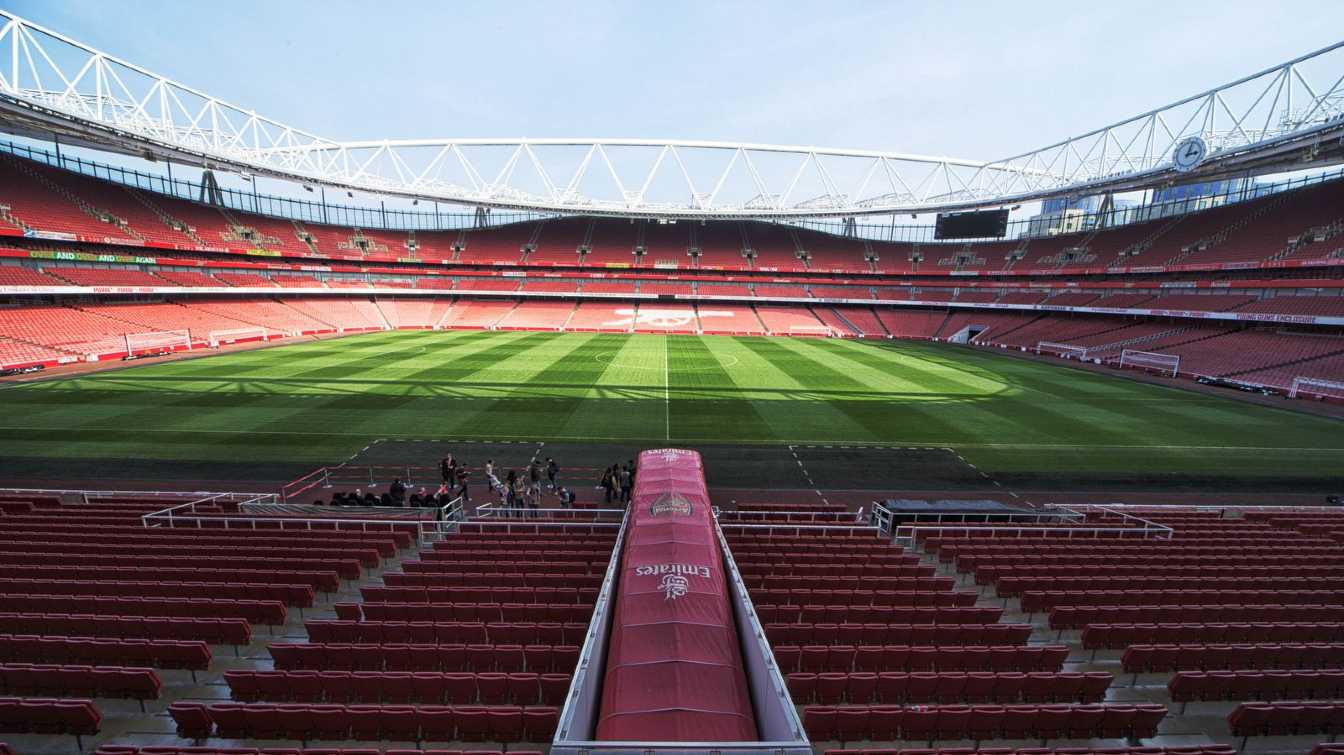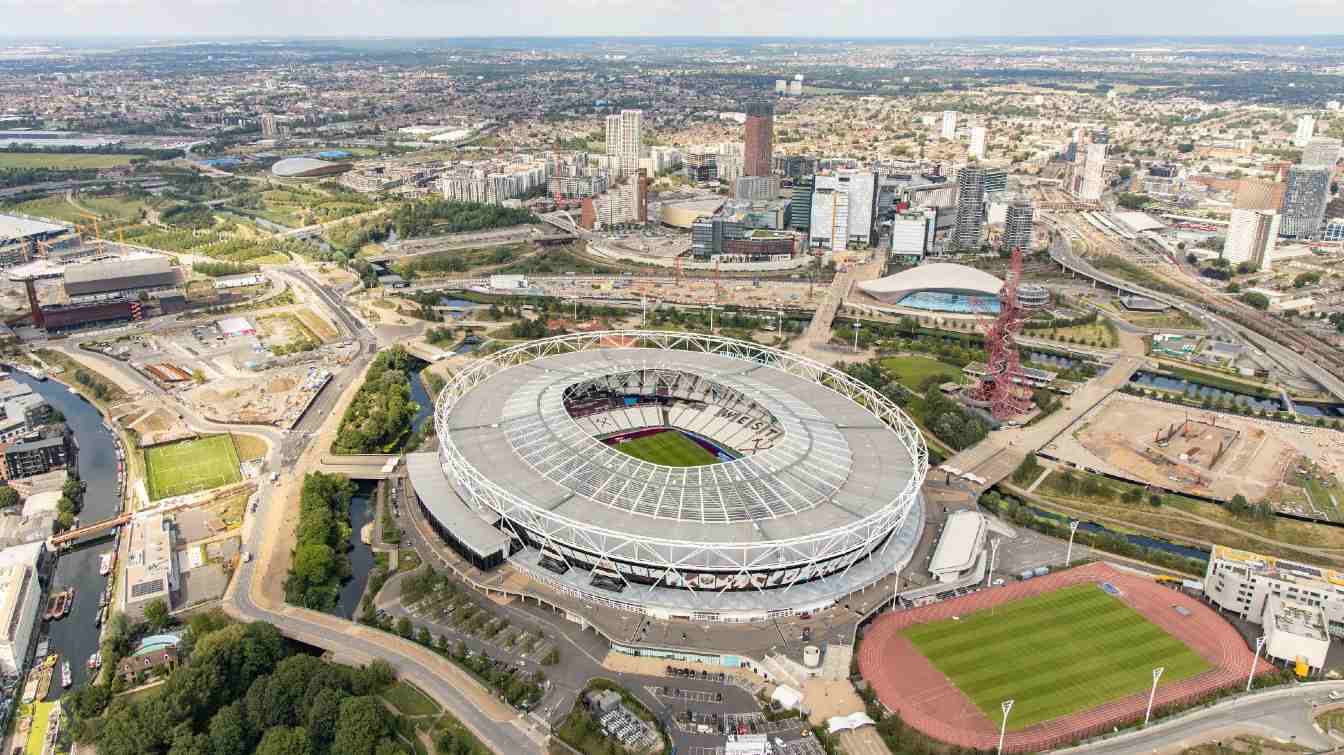England: Premier League's 50,000+ seat stadiums after Everton's new ground opens
source: StadiumDB.com; author: Paulina Skóra
 The Premier League is home to some of football’s biggest stages, where fans create unforgettable atmospheres. Everton’s new stadium joins the ranks of venues with 50,000+ seats. Discover the full list of English football giants.
The Premier League is home to some of football’s biggest stages, where fans create unforgettable atmospheres. Everton’s new stadium joins the ranks of venues with 50,000+ seats. Discover the full list of English football giants.
Advertisement
The opening of Everton’s new ground is a perfect opportunity to take a closer look at the Premier League’s biggest football arenas. Which of them set the standard — and which are in desperate need of modernization?
8th place: St James’ Park, capacity: 52,257, Newcastle United
St James’ Park is perhaps the most unique stadium in the Premier League. Its stands vary significantly in height, yet they remain consistently full. This asymmetrical venue is being prepared for Euro 2028, although there is much talk about Newcastle’s plans to expand the stadium or build a new one nearby. Newcastle United emphasizes that increasing capacity is a priority to meet growing ticket demand, especially after the club’s takeover by Saudi investors and subsequent sporting success.
7th place: Hill Dickinson Stadium, capacity: 52,888, Everton FC
Everton Stadium — the new home of The Toffees — has been long anticipated for the 2025/26 season and secured a title sponsor at the end of the previous campaign. Located at Bramley-Moore Dock by the River Mersey, it holds 52,888 spectators and cost around £800 million to build. The stadium features a 13,000-seat south stand inspired by Dortmund’s Yellow Wall
and boasts attractive catering and entertainment zones. In 2025, test matches with fans took place. The new venue will host Euro 2028 matches. Goodison Park, Everton’s former stadium, will become the permanent home of the women’s team, making it the largest dedicated women’s football stadium in the UK.
 © CP OVERVIEW | Hill Dickinson Stadium (Everton Stadium)
© CP OVERVIEW | Hill Dickinson Stadium (Everton Stadium)
6th place: Etihad Stadium, capacity: 53,400, Manchester City
The ongoing expansion has turned Etihad Stadium into a construction site. The redevelopment was planned in two phases, aiming to increase the capacity of both end stands by a total of 15,000 seats. The second phase goes beyond the stand itself, with a hotel and entertainment centers being built behind it. Once completed, the project will generate hundreds of permanent and temporary jobs, as well as additional casual roles, supporting the economic regeneration of East Manchester.
5th place: Emirates Stadium, capacity: 60,704, Arsenal FC
Talks are ongoing about expanding it to 80,000 seats — no wonder, as more fans could certainly gather at the heart of English football, especially with Arsenal’s sporting progress. However, every next season is expected to be the truly breakthrough one. The North London club recently recorded a record increase in revenue, second only to Manchester’s clubs. Emirates Stadium was a pioneer among modern club stadiums in England and remains one of the league’s largest and best venues, with a minimum capacity of 60,000.
 © Hugh Rawson | Emirates Stadium (Ashburton Grove)
© Hugh Rawson | Emirates Stadium (Ashburton Grove)
4th place: Anfield, capacity: 61,276, Liverpool FC
Anfield iis growing — literally. After completing the redevelopment of the Anfield Road stand in 2024, Liverpool’s stadium can now accommodate 61,276 spectators, making it the fourth-largest venue in the Premier League. This is the highest capacity in the legendary stadium’s history. The expansion faced setbacks — the main contractor’s bankruptcy in 2023 delayed the project, but it was ultimately completed by Rayner Rowen Construction. The new stand added 7,000 seats, and earlier expansions increased capacity by over 15,000.
3rd place: London Stadium, capacity: 62,500, West Ham United
Built for the 2012 Summer Olympics, London Stadium has been West Ham United’s home since 2016. Initially holding 80,000, it was adapted for football with a reduced capacity of 60,000. Despite removing the athletics track, the lower stands remain flat and far from the pitch, making viewing conditions less than ideal. However, high demand for West Ham matches keeps the stadium full.
 © Queen Elizabeth Park | London Stadium (Olympic Stadium)
© Queen Elizabeth Park | London Stadium (Olympic Stadium)
2nd place: Tottenham Hotspur Stadium, capacity: 62,850, Tottenham Hotspur
Tottenham almost on top? It must be for reasons other than the league table. The stadium of the North London club is modern, excellent for watching football, with stands very close to the pitch and a unique design. No wonder Tottenham Hotspur Stadium is admired worldwide, even by designers who draw inspiration from solutions used at this new Premier League centerpiece. Spurs made a significant infrastructural leap by demolishing White Hart Lane and moving to a much larger stadium. During this transition, the club also benefited — playing at Wembley allowed more fans to attend matches during Tottenham’s good form at the time.
1th place: Old Trafford, capacity: 74,310, Manchester United
The largest stadium in the Premier League, but is it the best? Perhaps in the past, but now newer venues have surpassed Old Trafford in many rankings. It was infamously nicknamed the fourth largest waterfall in England after its roof started leaking. There was also an inspection due to the presence of rats. What’s next? A new stadium nearby might solve the issues. The proposed stadium won’t reflect Old Trafford’s legacy or Manchester’s industrial spirit but aims to create its own legend, accommodating a record 100,000 fans. Old Trafford would likely be demolished as it lacks a viable alternative use, such as hosting the women’s team, due to maintenance costs and poor condition.
 © Greater Manchester Police | Old Trafford
© Greater Manchester Police | Old Trafford
Advertisement

 StadiumDB
StadiumDB